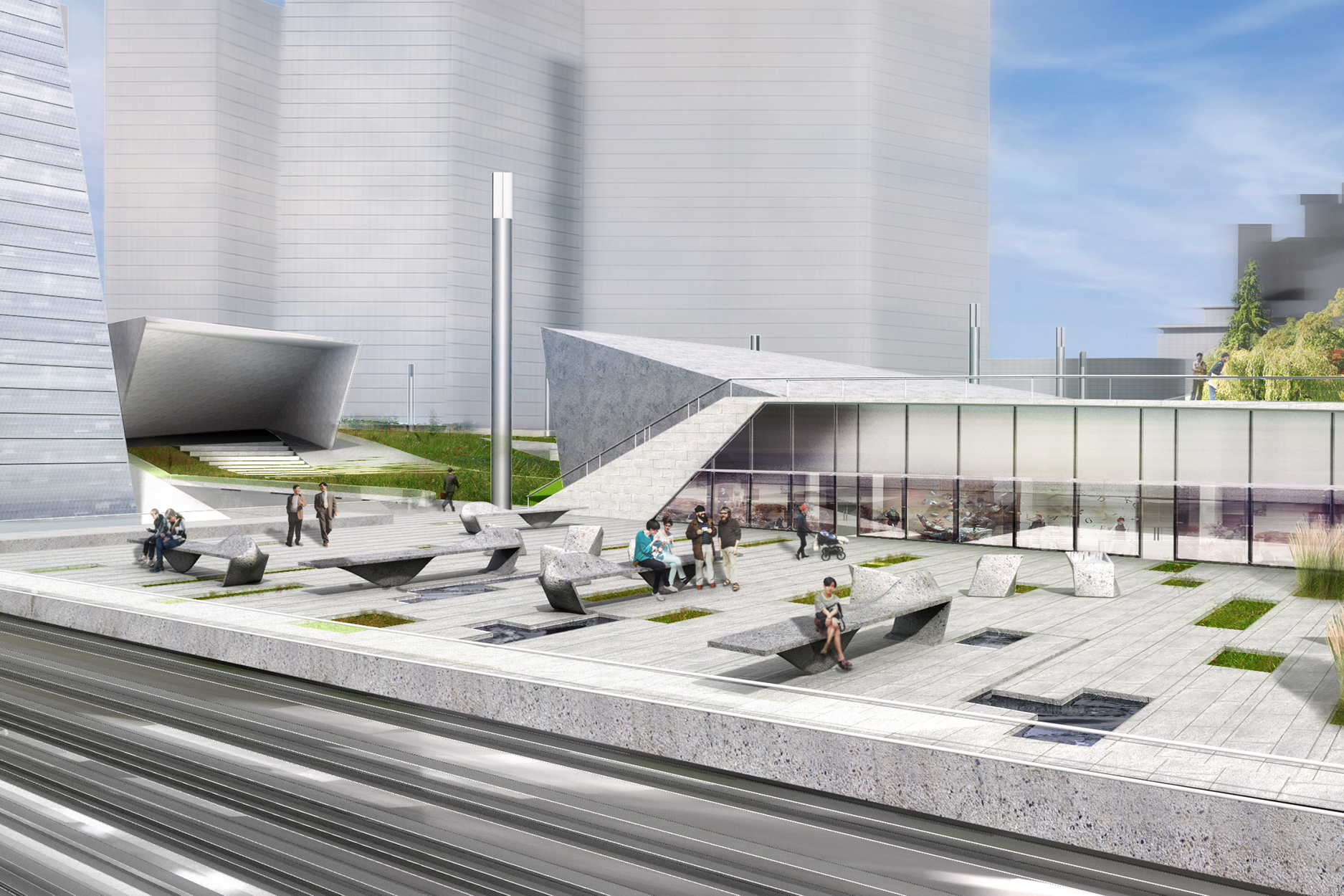




AGEMAKI Urbanism
Agemaki is a large-scale urban project for the Umekita region of Osaka. To create a complex terrain of office, housing, retail, and institutional spaces, a simple network model was created: a field of Japanese slipknots tethered to a field of posts. As one knot is pulled - by forces that are social or economical - the entire field would dynamically shift and pull the posts out of plane. Emergent densities of towers, fixed to a folding terrain, could be quickly generated.
After applying mathematical functions of vector cross products, self-organizing formations of towers are then digitally controlled by variables such as solar angles, floor-to-floor heights, and slab efficiencies. Rising at angles from folded tectonic plates, each terrace is governed by fixed dimensions and direction that direct a vertical structure, and produce generous domains of play and assembly for each tower.
Project: Mariana Ibañez, Simon Kim
Design Team: Jeremy Jih, Chris Soohoo, Tadashi Kikuno, Kordae Henry, Michael Wetmore
An invited competition by Kengo Kuma, in collaboration with Chris Reed and STOSS